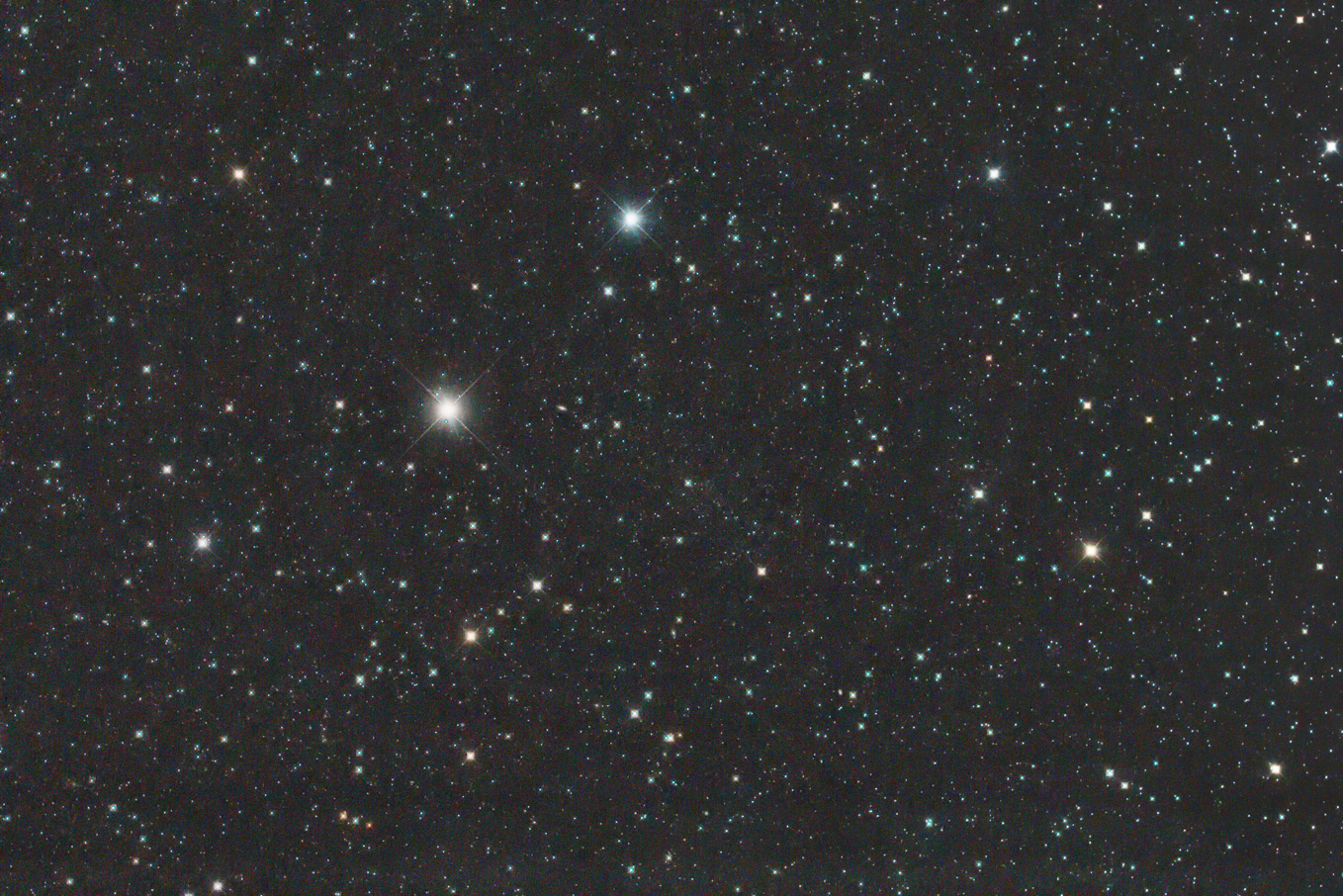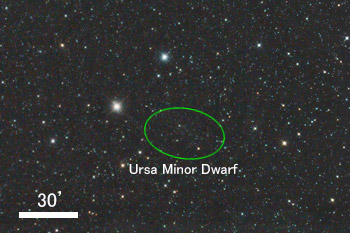Deep Sky Object in Spring
Ursa Minor Dwarf (UGC9749, Galaxy in Ursa Minor)
Click on image to enlarge
| Date & Time: | Feb 1 2020, from 25:28 to 27:24 JST(+0900) |
| Composed 24 shots with 5 minutes exposed |
| Optical: | TAKAHASHI 16cm(6.3") epsilon (f=530mm, F3.3) |
| with IDAS LPS-D1 Light-pollution suppression filter |
| Auto-guided with TAKAHASHI JP Equatorial & SBIG STV |
| Digital Camera: | Canon EOS 6D (Remodeled) |
| Location: | Ooizumi, Hokuto city, Yamanashi pref. |
| Camera Settings: | Recording Format...14bit CCD-RAW, converted to 16bit TIFF(5472×3648) |
| Device Size...35×24mm, Sensitivity...ISO1600 |
| Ursa Minor Dwarf(UGC9749) / Galaxy, type Dwarf Ellip |
|---|
| R.A. | 15h 08m 48.0s (2000.0) |
|---|
| Dec. | +67° 11' 00" (2000.0) |
|---|
| Apparent Size | 30.4×19.1' |
|---|
| Radial Velocity | -209km/s |
|---|
| Magnitude | 11.9 |
|---|
| Distance | 215 thousand light yrs. |
|---|
| Group og Galaxies | Local Group |
|---|
| Other IDs | CGCG 319-1, CGCG 318-18
MCG +11-18-30, DDO 199
PGC 54074 |
|---|
This image shows you an extraordinary-dimmed galaxy of "Ursa Minor Dwarf" positioned at about 4.7 degrees south of beta UMi.
The galaxy can be observed almost all year in the northern hemisphere.
It's considered that the dwarf galaxy is one of companions of our Galaxy with a distance of only 210 thousand light years.
Although the galaxy has a long axis of 30 arc minutes, the lower luminance delayed the discovery until 1955.
Maybe you can hardly recognize the shape of galaxy in the upper image, a green ellipse in a lower inset indicates the spread of the galaxy.
This image has been cropped with an equivalent focal length of 700 mm.
|


